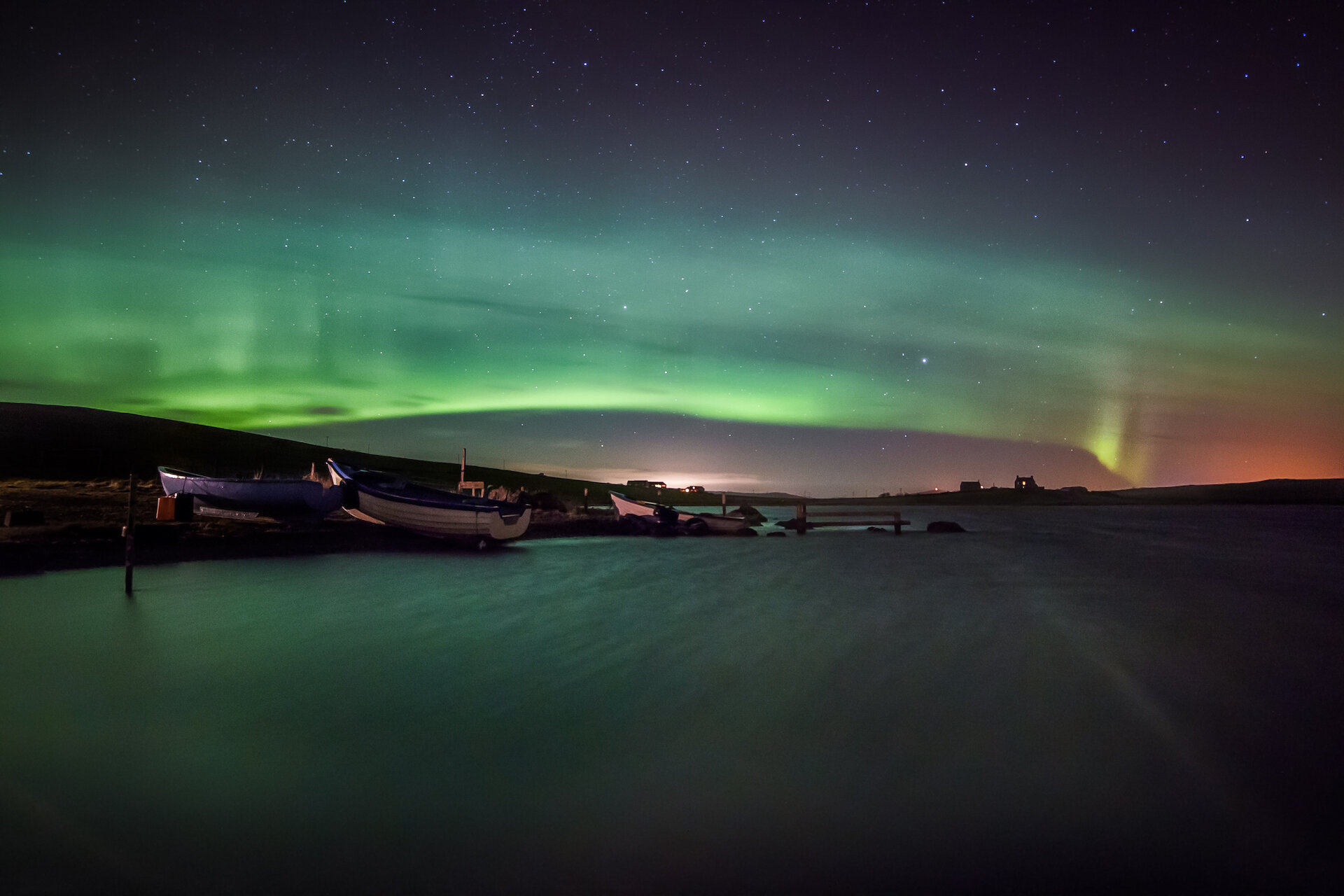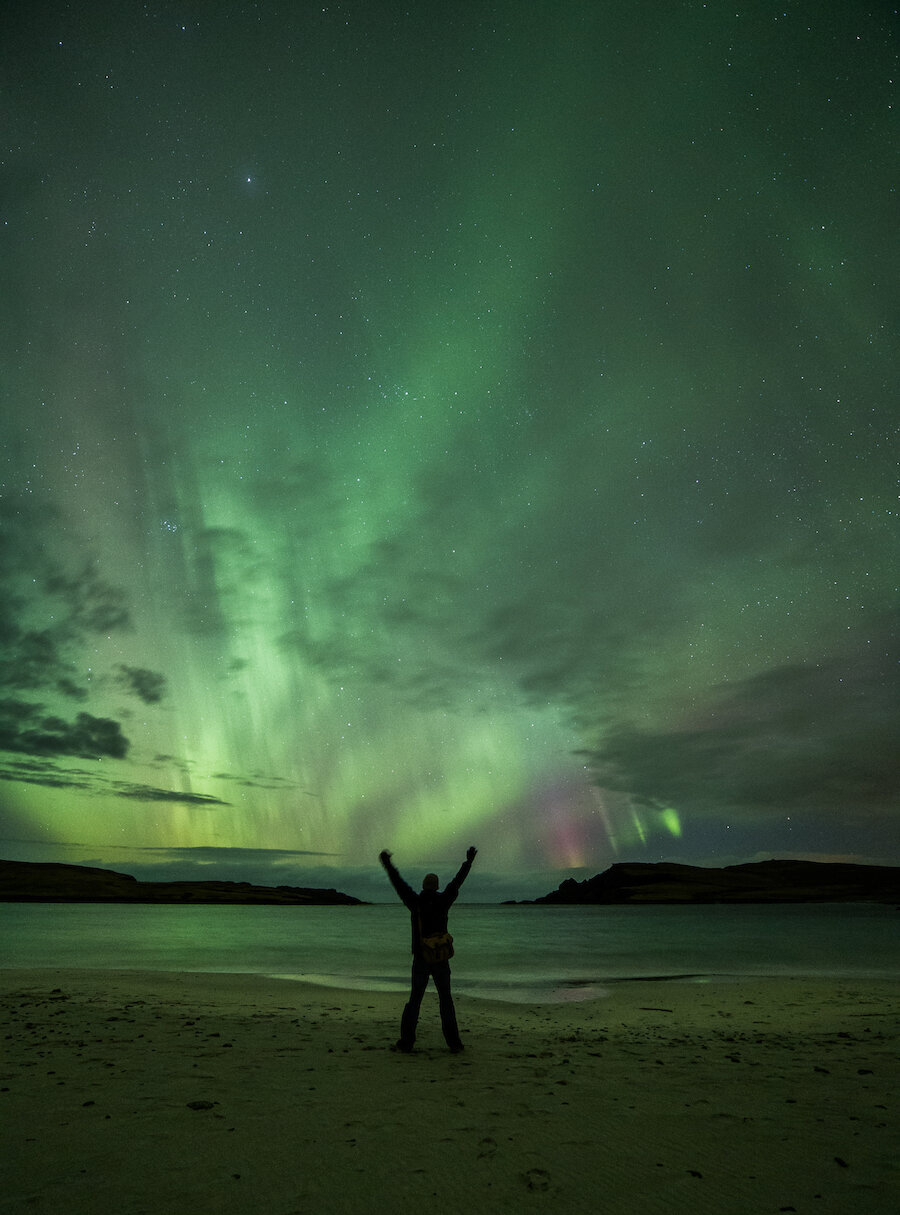What are the Northern Lights?
Aurorae occur in the sky above Earth’s polar regions. The northern sky takes on a greenish glow, with other colours such as pink, blue, orange or purple also present at times. Displays vary greatly in intensity – and may do so over an hour or so but an outstanding display can occupy the whole of the northern half of the sky and shed a noticeable light over the landscape. Less powerful aurorae will produce a uniform glow towards the north-west.
Aurorae happen when electrically charged particles originating from the sun collide with particles energised by the earth’s magnetic field. The volume of solar particles varies according to the amount of solar electrical activity. A brilliant aurora on one evening may be followed by a faint one the following night, or by no aurora at all. Occasionally, great bursts of solar energy are released and these produce the most dramatic effects.
When can I see the Northern Lights in Shetland?
As Shetland lies closer to the North Pole than any other part of Britain, it’s the best place to see the Northern Lights. Over a typical winter, a keen observer checking the skies on every clear night could certainly expect to see the aurora several times, with a number of low-level displays and possibly one or two more spectacular ones. But, the important thing to bear in mind is that aurorae are hard to predict. Even if the aurora is present, thick cloud may stop you seeing it.

